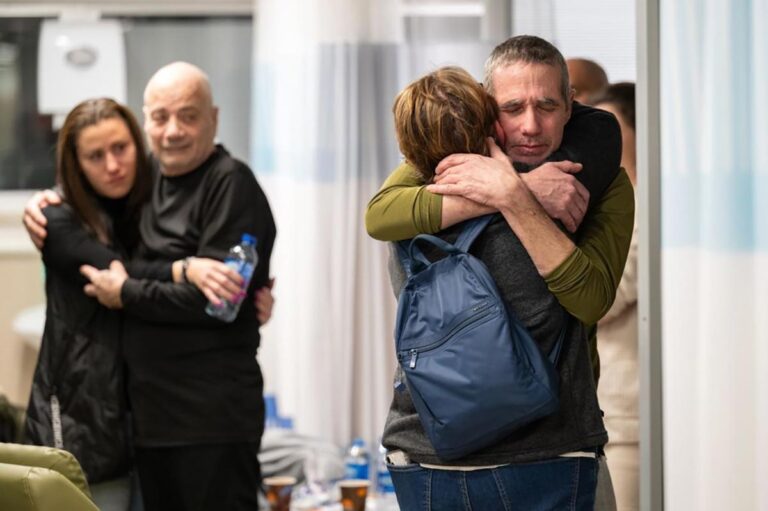
Israeli special forces rescued Louis Har and Fernando Marman — two Israelis taken hostage by Hamas from Kibbutz Nir Yitzhak on Oct. 7 — in a daring operation in the heart of Rafah on Sunday night.
Aside from the successful rescue of two hostages on Monday, only one other hostage, Ori Magidish, has been freed through a military operation since Oct. 7.
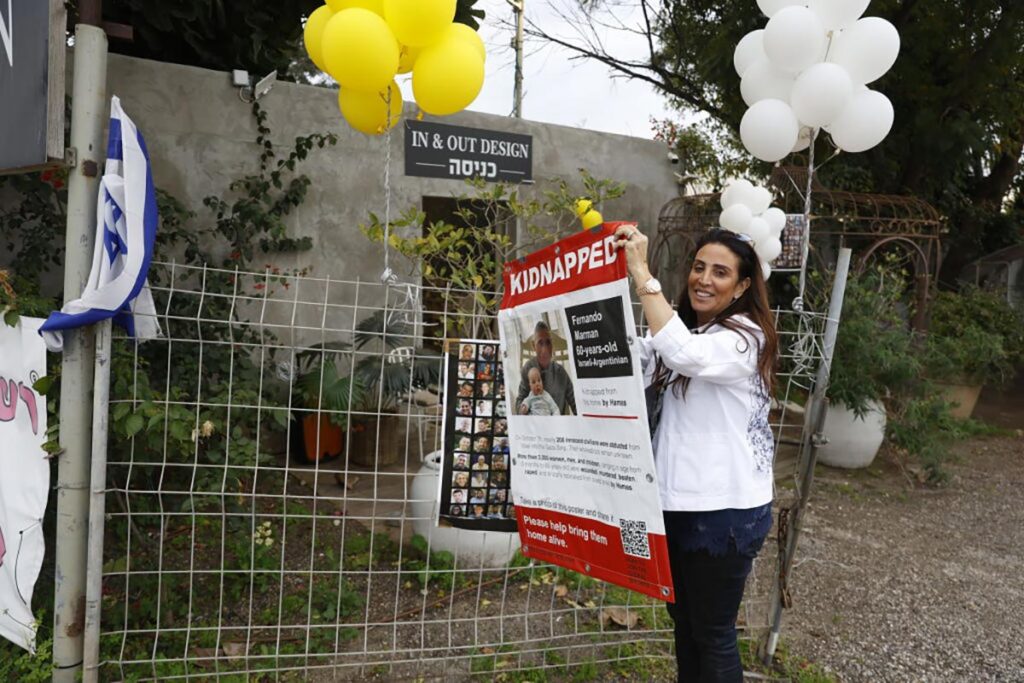
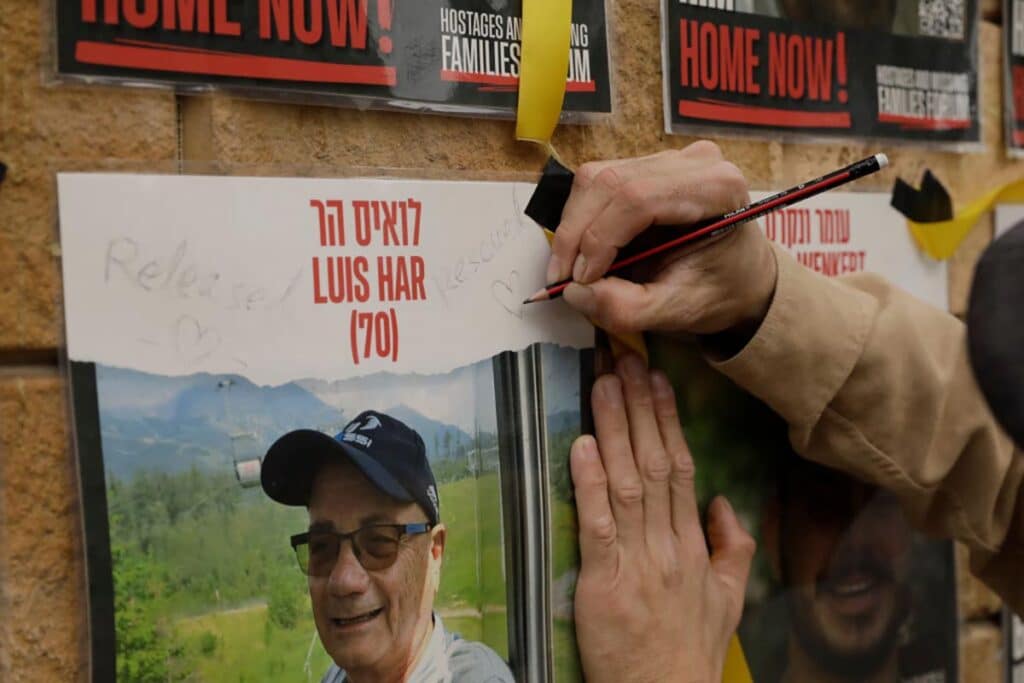
After this successful operation, Israelis are discussing how the country should move forward to release the rest: a ceasefire and hostage deal, military pressure, or a mix of the two?
Let’s unpack the rescue operation and the conversation within Israeli society about how to bring the rest of the hostages home.
What happened?
In the dead of night at 1:49 a.m. Israel time, Israeli special forces burst into a building in Rafah, finding Har and Marman on the second floor surrounded by armed Hamas terrorists.
The special forces grabbed the two hostages and shielded them with their own bodies as they exchanged fire with terrorists who were in the building and terrorists who began firing from nearby buildings.
“The hostages are in our hands, safe and sound”
— Israel Defense Forces (@IDF) February 12, 2024
🔴WATCH the moment hostages Fernando Simon Marman and Luis Har were rescued during the operation in Rafah yesterday: pic.twitter.com/1OXsHf9F9W
Just one minute after the rescue mission began, Israel’s Air Force and the IDF Southern Command launched a wave of strikes throughout the area. This was aimed at providing cover for the special forces and neutralizing some of the terrorists who were attacking them.
Palestinian media reported that the airstrikes injured and killed dozens of people, with footage from the area showing widespread damage due to the strikes.
The special forces successfully escorted Louis and Fernando to a safe zone where they were airlifted by Unit 669 to Sheba Medical Center in Tel Hashomer in healthy condition. At Tel Hashomer, they were finally able to reunite with their loved ones.
A bittersweet response within Israel
While the successful operation resulting in two hostages’ release was met with joy in Israel, it served as a reminder that there are still 134 Israeli men, women and children who remain in Hamas captivity.
IDF Spokesperson Daniel Hagari took note of this when announcing the details of the mission on Monday, saying, “Along with the excitement, this morning as well, even after this successful rescue operation, we do not forget for a moment that 134 hostages are still being held in Gaza.”
PM Netanyahu:
— Prime Minister of Israel (@IsraeliPM) February 12, 2024
"This is a day of joy mixed with sadness: Joy over the release of our hostages and sadness over our fallen soldiers. However, I would like to tell you that the freeing of Louis and Fernando was one of the most successful rescue operations in the history of Israel. pic.twitter.com/nu7ciNZFuM
Hagari addressed the hostages still in Gaza, saying, “If you can hear me, know that we are very determined to bring you home and we will not miss any opportunity to bring you home.”
Although all Israelis share the commitment to bring the hostages home, there is no consensus on the exact method to achieve this.
Ceasefire or heavier fire?
There are two central options: reaching a ceasefire deal, which would likely involve the release of Palestinian prisoners, or conducting more military raids to rescue the hostages.
The last hostage release deal was reached in November and resulted in 105 hostages and 240 Palestinian prisoners being released during a week-long pause in the fighting.
Even among the families of the hostages, there are differing opinions on the best approach to bring their loved ones home.
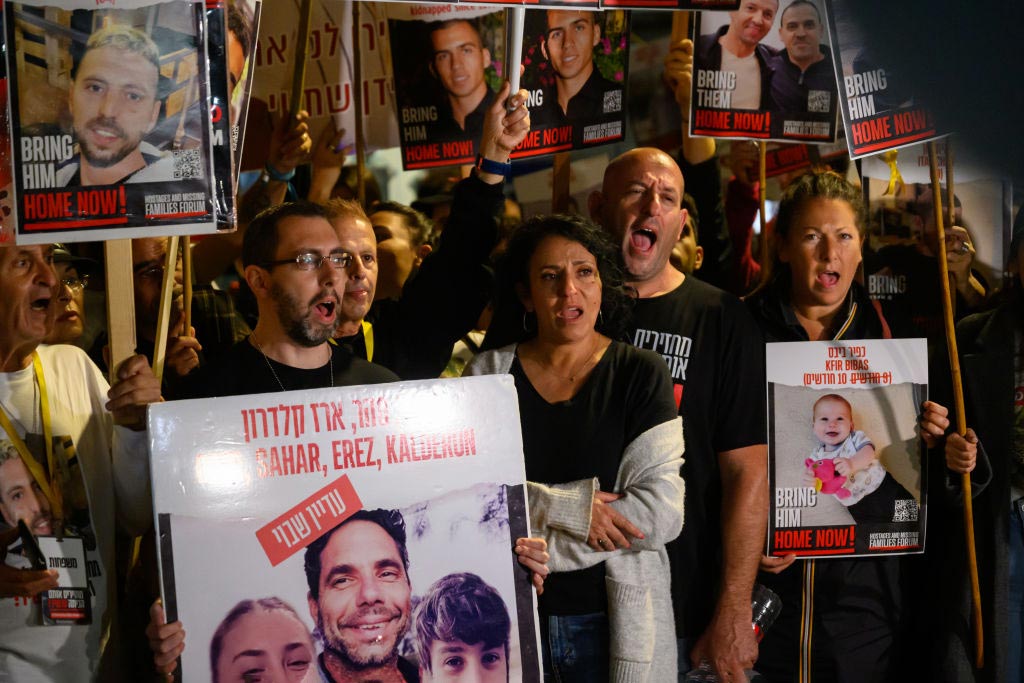
The Hostage and Missing Families Forum — the central group of families of the hostages — is pushing for the government to reach another hostage release deal, even if it involves the release of many imprisoned terrorists and a long pause in, or even an end to, the war.
On the other hand, the Tikva Forum, a smaller group of the hostages’ families, is advocating for the military to intensify its pressure on Hamas. They are urging the government not to sign an agreement that involves a significant release of prisoners or an end to the war.
Both options come with a series of risks and benefits that are heavily debated in Israeli society — let’s dig a bit deeper into each one.
Option 1: Another ceasefire and hostage exchange deal
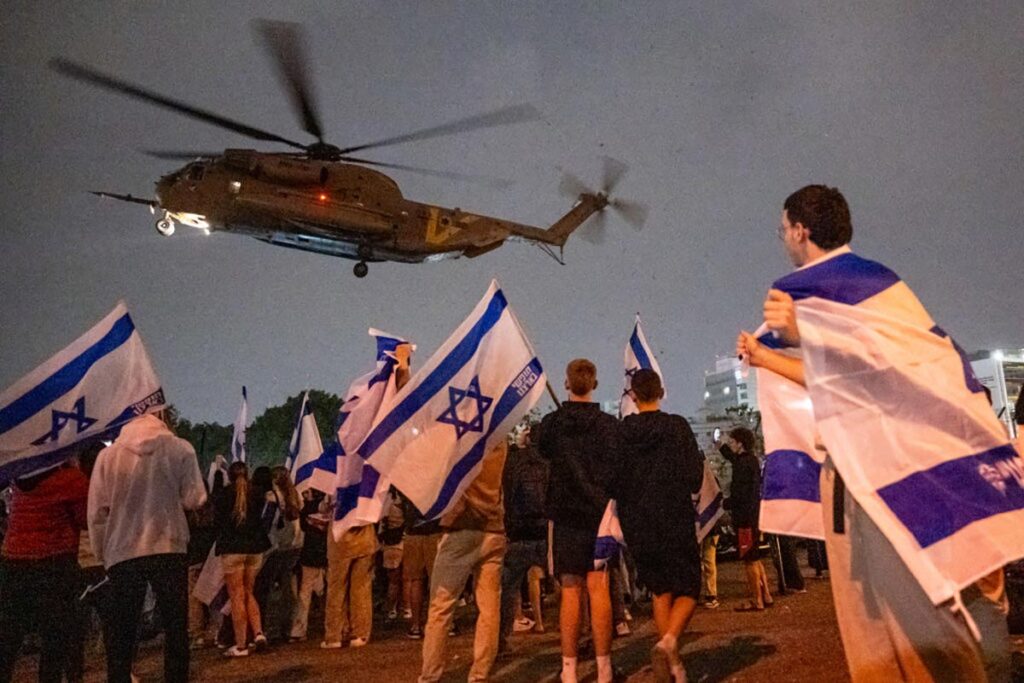
While a ceasefire agreement could take various forms, recent reports suggest that any such deal would likely include a ceasefire lasting several weeks and the release of dozens if not hundreds of Palestinian prisoners, including individuals who committed terror attacks.
Supporters of such a deal argue that the hostages, many of whom suffer from chronic illnesses, are in mortal danger — every second they remain in captivity could lead to their death by illness, Hamas’ actions, or being caught in the crossfire — a situation that has already occurred.
Conversely, opponents of a deal argue that releasing a large number of prisoners would return dangerous individuals to society, putting countless lives at risk.
They also argue that it may be difficult for the IDF to resume operations after an extended ceasefire and that a deal that includes an extended ceasefire and a large prisoner release could undermine Israeli deterrence.
Opponents of a deal also voice concerns about Hamas’ lack of reliability as a terror organization, citing the previous deal in which Hamas failed to adhere to the agreement, resulting in hostages being left behind.
This debate is particularly charged because Yahya Sinwar, the head of Hamas in Gaza and the mastermind of the Oct 7 massacre, was released in a similar deal in 2011 to secure the release of captive IDF soldier Gilad Shalit.
Option 2: Military pressure
There are also a range of views about how exactly military pressure should be used, ranging from increasing it to secure a more favorable ceasefire agreement to focusing on releasing hostages only through rescue missions.
Supporters of military pressure often cite concerns with the ceasefire approach as justification. They point to the success of past hostage rescue operations, such as the Entebbe raid and the latest hostage rescue mission, as evidence supporting the efficacy of this strategy.
But alongside the successes of the recent rescue mission and some past missions, there are a plethora of risks and complexities, and a history of failed rescue attempts as well.
In 1994, the attempt to rescue IDF soldier Nachson Wachsman from Hamas captivity ended tragically, resulting in the deaths of Wachsman and the leader of the commando team assigned to rescue him.
There have been previous unsuccessful rescue efforts in the current war as well, including one incident in which hostage Sahar Baruch was killed and two soldiers were wounded. Another tragic incident resulted in the accidental deaths of three hostages, Yotam Haim, Samar Talalka, and Alon Shamriz by Israeli forces in Gaza City.
The IDF spokesperson recently acknowledged these challenges, telling reporters that while the defense establishment has been working every day since October 7 to formulate rescue plans, the conditions that would allow for such missions rarely materialize.
Additionally, some of the hostages may be being used as human shields to protect senior Hamas leaders like Sinwar, adding further complexities to any possible rescue missions.
What happens next?
Given the significant drawbacks of both strategies, the government faces a challenging choice and seems to be considering a combined tactic. This approach includes ramping up military pressure and conducting rescue operations, while simultaneously engaging in talks to reach a ceasefire and hostage release deal.
Defense Minister Yoav Gallant stressed on Monday evening that while there will be more operations, most of the hostages will not be returned in this way. “We will retrieve most of them, I hope, through processes of agreements,” Gallant said.
On Tuesday, delegations from Israel, the U.S., Qatar, and Egypt headed to Cairo to hold negotiations aiming to reach a ceasefire and hostage release deal. However, it’s reported that the Israeli delegation will only participate in these talks if Hamas reduces its demands.
Recent negotiations have reached a standstill after Hamas rejected a proposed deal, maintaining its stance that any agreement must include a full Israeli withdrawal from Gaza, the end of the war, and the release of at least 1,500 Palestinians held in Israeli prisons, including those involved in terror attacks.
Israeli officials have rejected Hamas’ conditions as “delusional,” emphasizing that the war will only end when all the hostages are returned and Hamas is removed from Gaza.
Egypt has reportedly placed pressure on Hamas to scale back its demands, warning Hamas leaders that they have two weeks to do so or Israel will likely launch a ground offensive in Rafah, the last major city in Gaza that the IDF hasn’t fully entered.
While it remains uncertain what hostage release efforts will look like going forward, one thing is certain: the successful rescue of Louis Har and Fernando Marman has brought much-needed hope to the families of the 134 hostages still being held by Hamas, as well as across the entire State of Israel.
Originally Published Feb 12, 2024 05:08PM EST
